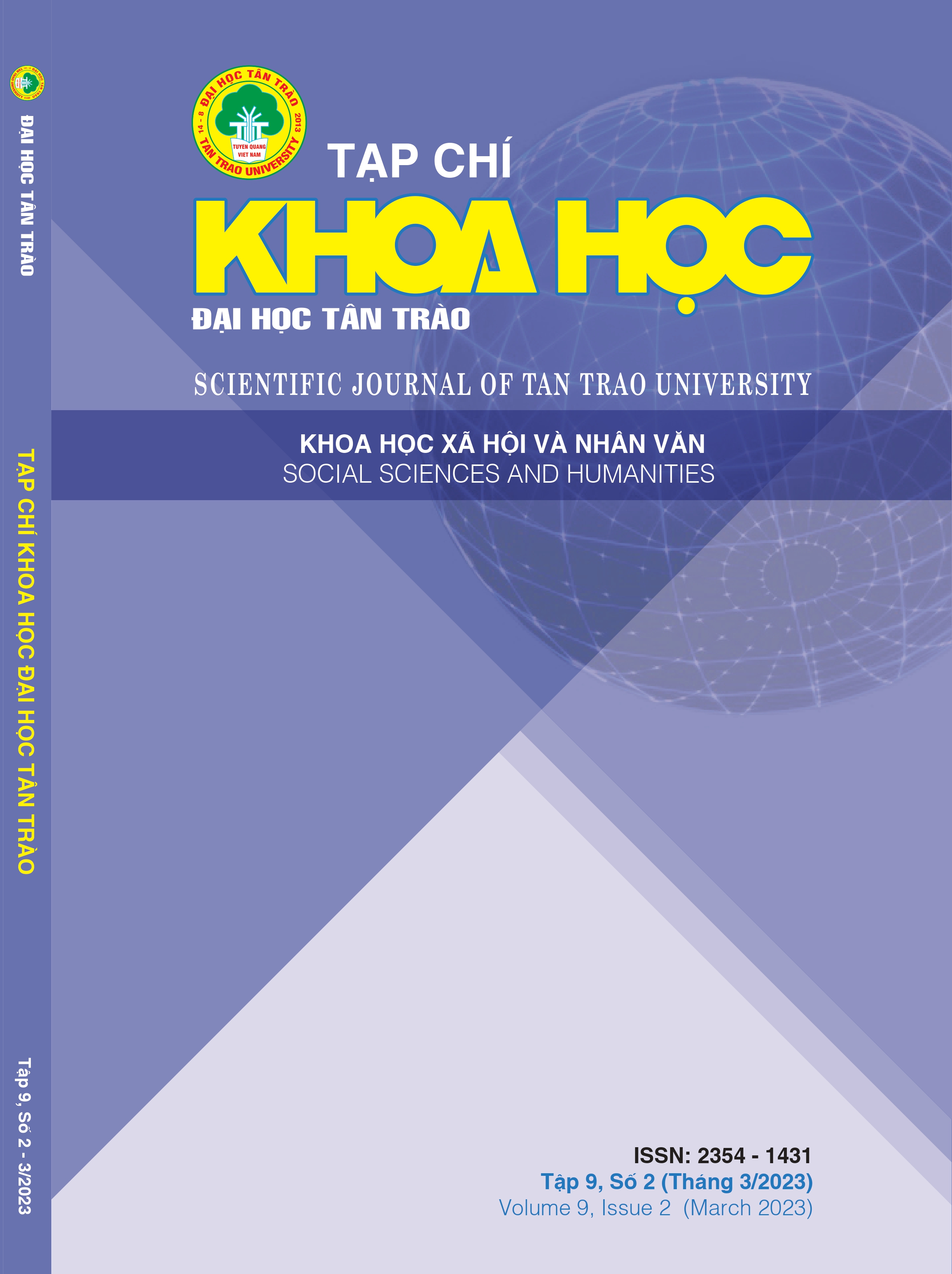VALUE OF ANCIENT WRITINGS OF DAO ETHNIC GROUP IN TUYEN QUANG
DOI:
https://doi.org/10.51453/2354-1431/2023/924Keywords:
Epitaph, feudalism, dynasty, Bao Ninh Sung Phuc, Chiem Hoa, Tuyen QuangAbstract
Through the long history of development, the residents in Tuyen Quang province have created and preserved a rich culture, bringing the unique features of each region and each ethnic group, which contributes to creating a rich culture both unity and diversity of Vietnamese culture. As a northern mountainous province, Tuyen Quang has 22 ethnic groups living together, in which Dao ethnic group have an important position. Dao ethnic group ranks the third after the Kinh and the Tay in Tuyen Quang. Along with Mong people, the Dao live in high mountainous regions where have great significance in terms of politics and national defense and the tradition of revolutionary struggle. It is the living terrain that also creates conditions for the Dao ethnic group having its own unique culture. Tuyen Quang is also the only province in the country that has all 9 Dao branches living and practicing together, which helps to preserve unique cultural quintessence such as costumes, houses, cultural life, spirit... In this scientific article, let's study the ancient writings of Dao people in order to see their unique culture.
Downloads
References
[1] Propaganda Department of Tuyen Quang Provincial Party Committee (2018), Dictionary of Tuyen Quang places, National Political Publishing House, Hanoi.
[2] Chung. T.N., Pre-history of Tuyen Quang, Social Sciences Publishing House - 2009.
[3] Dang. B.V., Tung.N.K., Trang.N., Tien. N.N. (1971), Dao people in Vietnam, Social Science Publishing House.
[4] Thong. M.D. (editor), Dao ethnic group rituals in Tuyen Quang, Tuyen Quang Department of Culture, Sports and Tourism, 2008.
[5] Tu.T.M (2022), Traditional custom of making houses of Dao people in Tuyen Quang, Scientific Journal of Tan Trao University, No. 8, 2022, page 86-91.
Downloads
Published
How to Cite
Issue
Section
License

This work is licensed under a Creative Commons Attribution-ShareAlike 4.0 International License.
All articles published in SJTTU are licensed under a Creative Commons Attribution-ShareAlike 4.0 International (CC BY-SA) license. This means anyone is free to copy, transform, or redistribute articles for any lawful purpose in any medium, provided they give appropriate attribution to the original author(s) and SJTTU, link to the license, indicate if changes were made, and redistribute any derivative work under the same license.
Copyright on articles is retained by the respective author(s), without restrictions. A non-exclusive license is granted to SJTTU to publish the article and identify itself as its original publisher, along with the commercial right to include the article in a hardcopy issue for sale to libraries and individuals.
Although the conditions of the CC BY-SA license don't apply to authors (as the copyright holder of your article, you have no restrictions on your rights), by submitting to SJTTU, authors recognize the rights of readers, and must grant any third party the right to use their article to the extent provided by the license.


